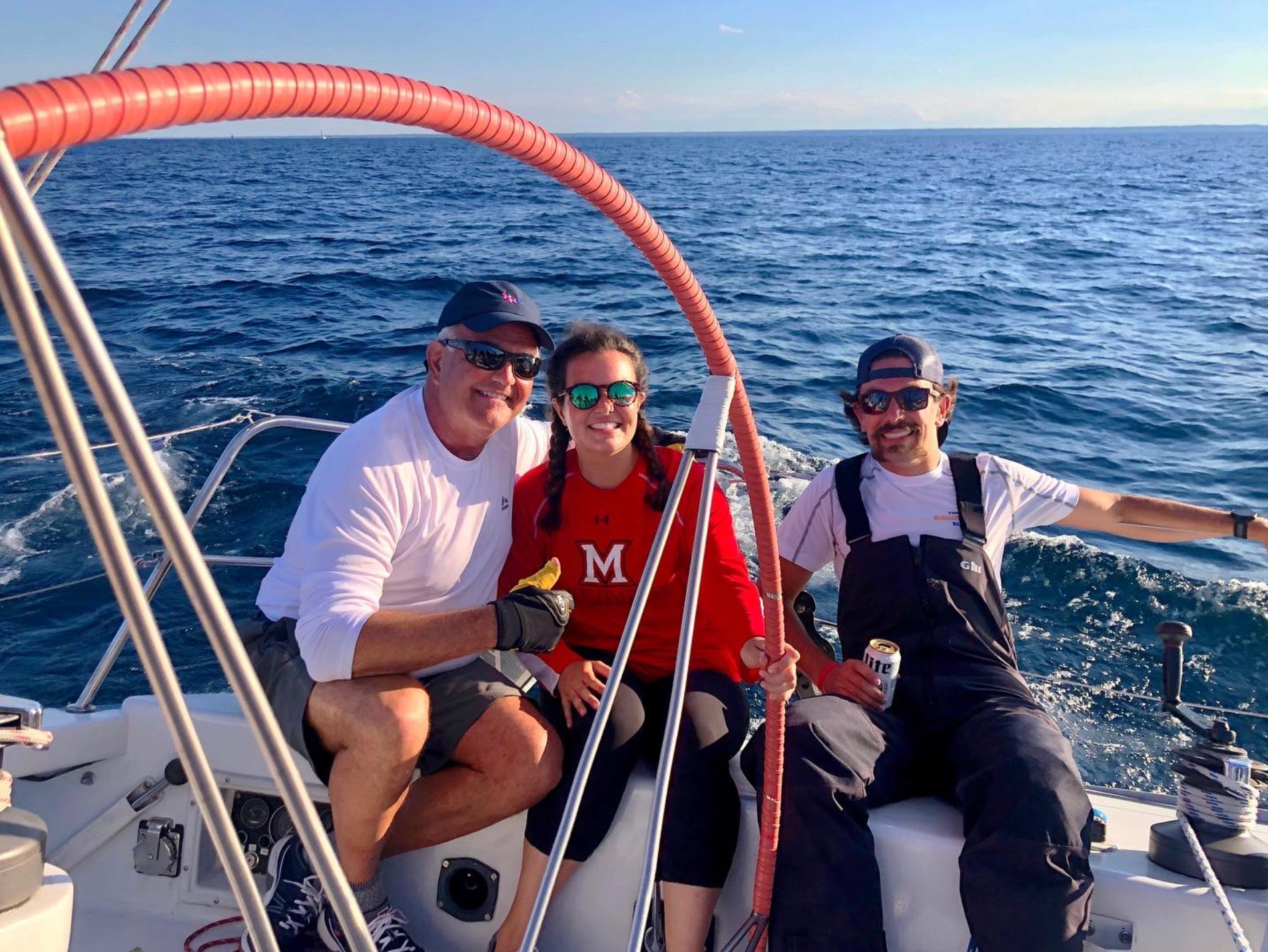There are many beautiful sights while sailing the sea; the starry lit sky, the budding sunrise, and birds flying overhead…
It’s hard to appreciate all of those when vomiting over the side of the boat.
Last weekend, I raced 266 nautical miles across Lake Huron in Michigan.

At the start, pictures captured bright smiles of excitement for the journey ahead. What wasn’t accurately captured was the turbulent in-between. I remember a wonderful two-day race, but also thoughts of quitting and jumping ship. There was a cycle of misery. My forehead pounded with a headache.
I was dehydrated because I hadn’t eaten or drank.
I didn’t want to upset my stomach and create more nausea.
I barely slept and the one time I did, I woke up to a gallon of water drenching my dry clothes.
As ultramarathoner Dick Collins says:
Decide before the race the conditions that will cause you to stop and drop out. You don’t want to be out there saying, “Well gee, my leg hurts, I’m a little dehydrated, I’m sleepy, I’m tired, and it’s cold and windy.” And talk yourself into quitting. If you are making a decision based on how you feel at that moment, you will probably make the wrong decision.
I struggled to see the point of why I had signed up to sail in the first place. Even though it was hell, it was a special hell.
When I step onto a sailboat to greet my peers with an ‘Ahoy,’ it brings me into a new world. When I leave the land, I start exercising muscles with how to deal with uncertainty to become a better person all around.
At the surface, it’s just a sport like any other, but for me, it’s much more. While at sea, sailing equips me with the tools to apply to other areas of my life. Since the development of civilization, mankind figured out how to steer Mother Nature in its desired direction. Sailing is a team sport where the wind is used to propel forward. While onboard, it brings the team together while communicating a new language and making strategic decisions.

Sailors have their vices, but they also have persistence and determination. We do our job and step up to help with other jobs when necessary. We take turns at the helm when each other’s eyes need rest.
The language used changes once standing on a sailboat. The right side is no longer just the right side. It is “starboard” which means you have right of way over other boaters. This is a universal language. Each tool on the boat serves a purpose and has its own unique name. A rope on land that ties knots turns into a line on a boat. Once that line goes into a pulley and is attached to a sail, it transforms into a sheet. There is beauty in the fluidity of the terminology used.
While sailing, each member must effectively communicate this new language. When the boat is turning and tacking upwind, the team must avoid getting smacked into the water by the wretched Boom. During my junior days, I learned this via a concussion and the gift of a fat lip from the Boom. The wind steals your words, so while yelling across the ship, each sailor needs to ensure that they’re speaking directly at who they intend to. It’s not always chaotic though. The boat provides an atmosphere to escape from the day-to-day world.
Those who sail together, bond together. I hear my dad share the same stories for the thousandth time, yet they never cease to get a chuckle from me. Sailing creates a sense of being on a team and community. When a crucial decision needs to be made, all hands are on deck.
Creating a sailing strategy is the application of creative skill and imagination. The decisions of how to get to the final destination use physics, intuition, and scouting where the competitors are.
Sailors cannot foresee what is ahead, but the crew comes together to start proactively planning. The compass of where to go can change at any point, since where the wind is coming from shifts. A nonlinear zig-zag path is created since the sail flaps and halts the boat speed while directly sailing into the wind.

The red line is the Rhumb line: the shortest distance between two points.
The team builds a strategy to figure out the possible stepping stones. Do they sail the shortest route on the rhumb line or do we look for better winds? Ideally, sailors crave velocity made good. Also called VMG is the amount of speed headed in the desired direction. They want to sail fast but not in the wrong direction.
When you see more wind on the horizon and want to go faster, you head towards the puff. As the wind slows down and the boat gets knocked, you accept reality and try to find better wind elsewhere. The technology aids in better predicting where to go. The contradiction comes if our gut says out in the lake towards Canada there is more air. It comes down to a balancing act of using the computer’s prediction and the crew’s intuition.
Sailors seem crazy for voluntarily signing up for the ambiguous sport dependent on weather and the team. Yet we still show up. It showcases much of what life is. It is uncertain. A sailboat is a unique place, where you surround yourself with a culture of people who speak the same boating language and strive to find answers to life’s intangible questions. This is why sailors sail.
Once on land, sailors grow to appreciate dry clothes, non-rocking stable grounds, and home-cooked meals. Yet, they still think about the next time they will step onto a boat to sail again. Sailing is like leaving the world you know well on land to enter into another world at sea. After coming back, sailors see life more clearly. As they live life, sailors realize how the sport provides navigational skills to help them survive and thrive in life at sea and on land.
Thank you to my editors for helping to make my writing the best it can be: Tim, Ayomide, Ben, Adam, Juan David.

